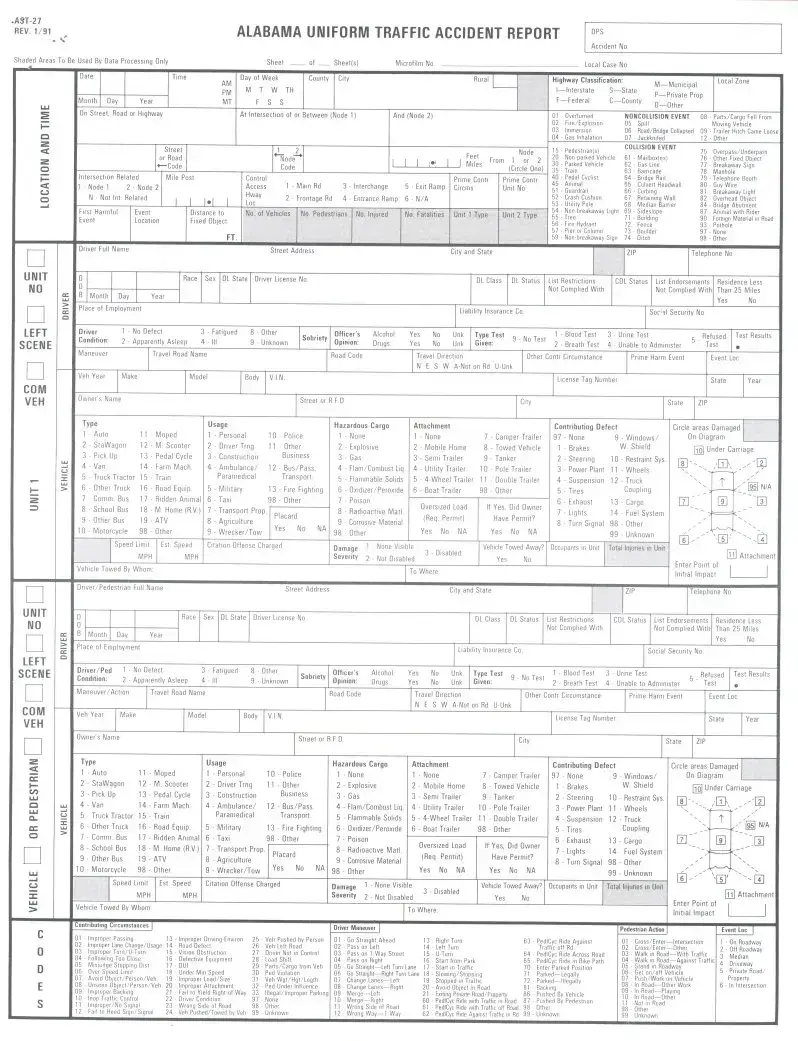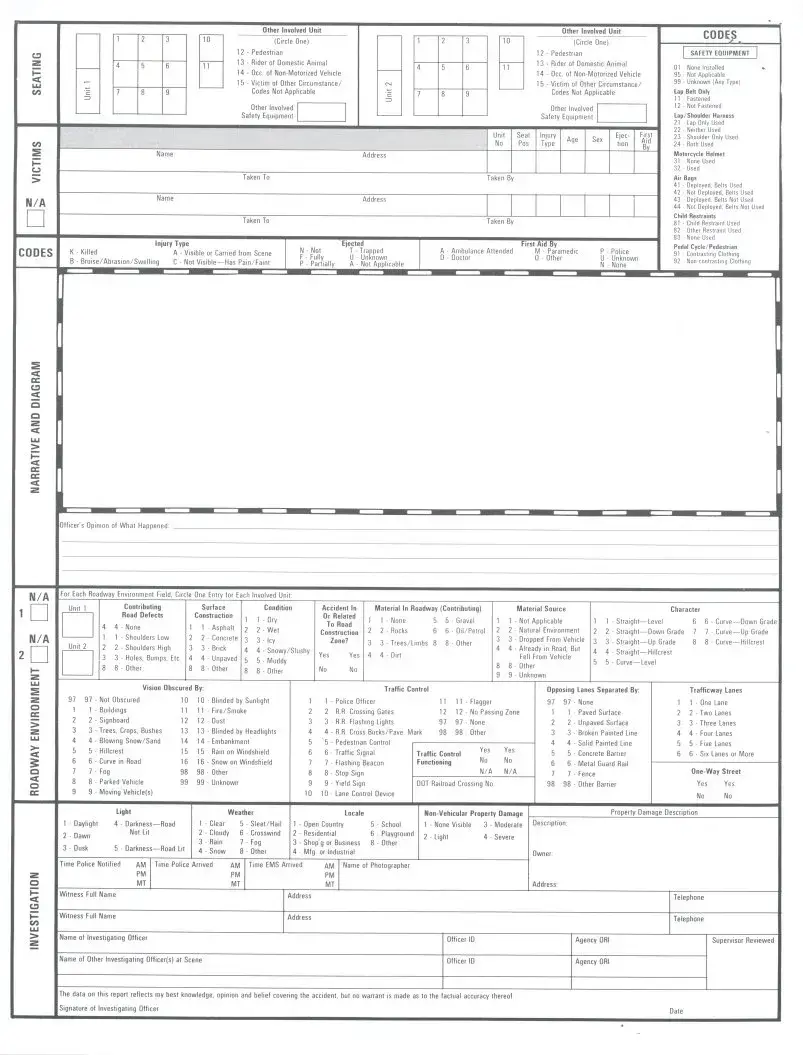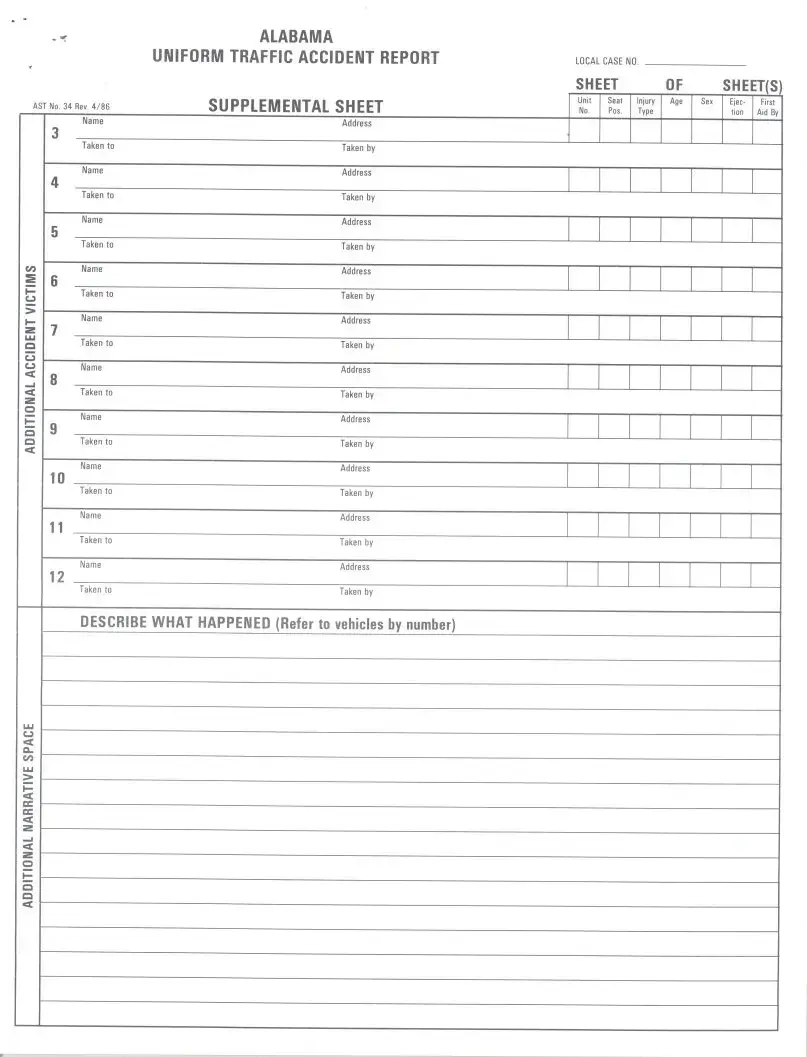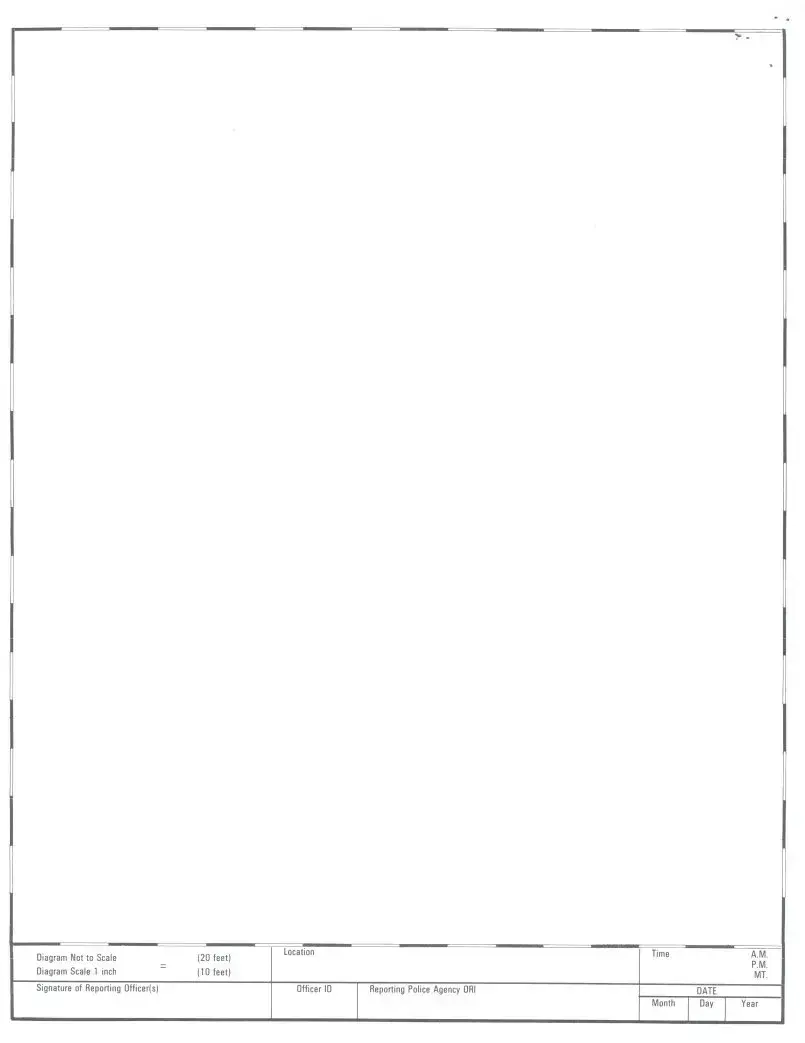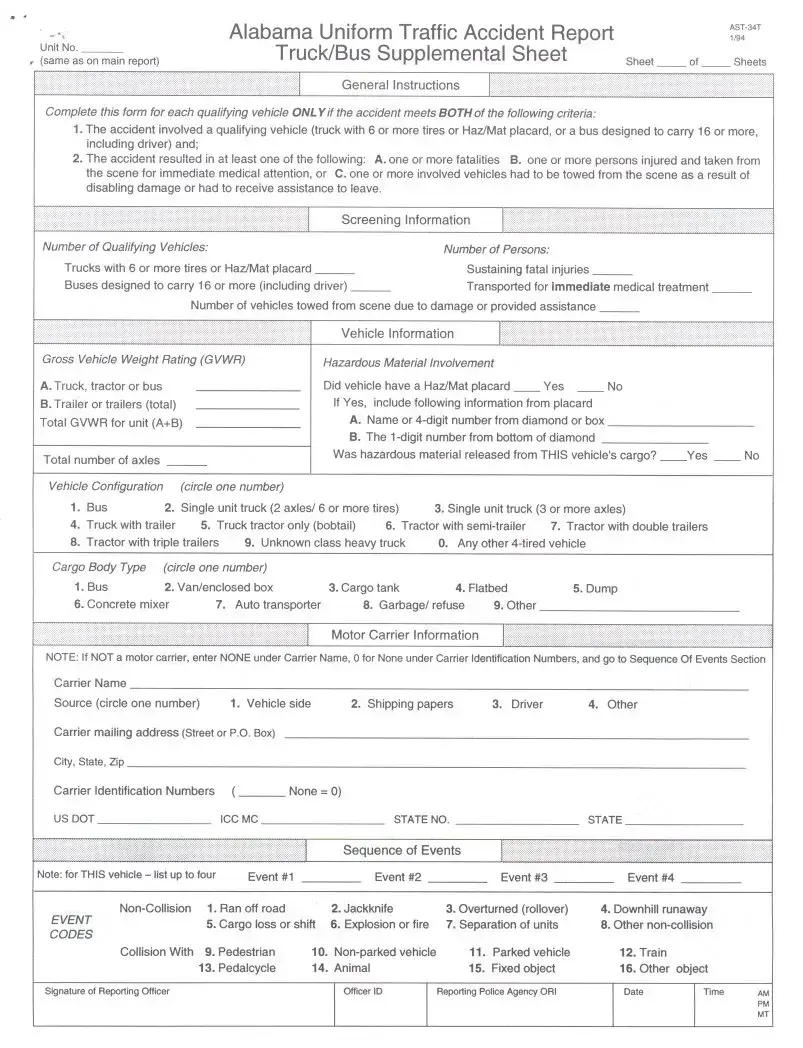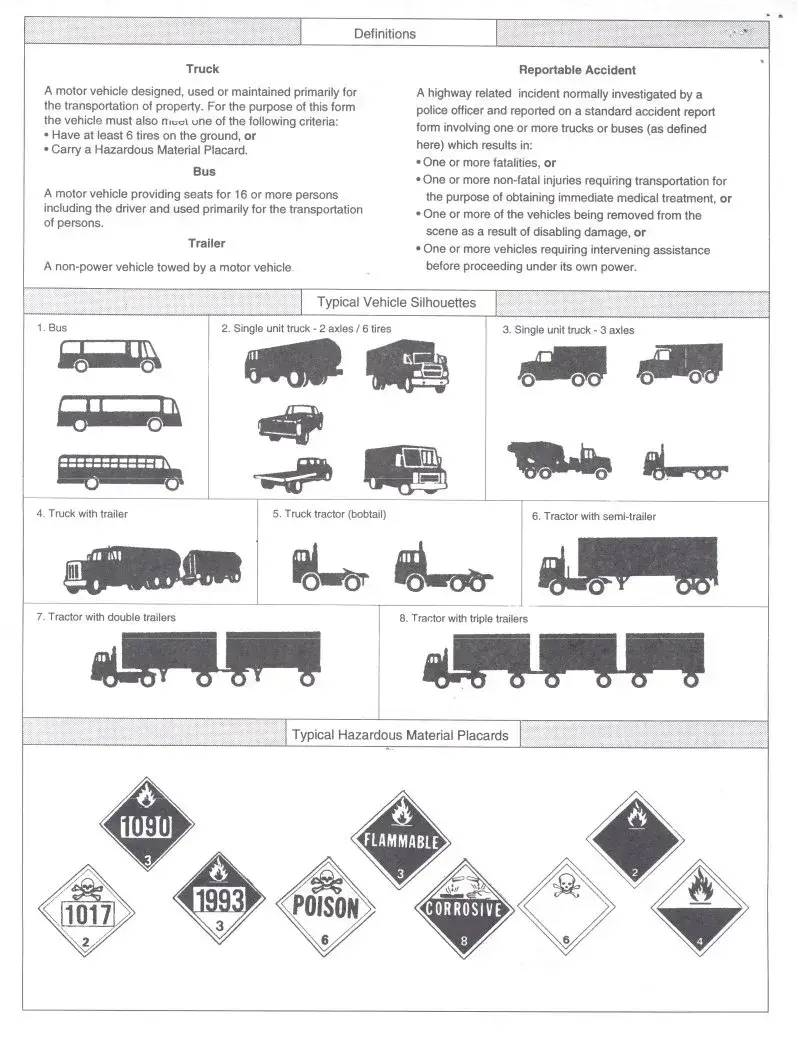What is the Alabama Uniform Traffic Report form?
The Alabama Uniform Traffic Report form is a standardized document used by law enforcement officers in Alabama to record details of traffic incidents. This form ensures that all necessary information is collected consistently across the state.
Who is required to fill out the Alabama Uniform Traffic Report form?
This form is completed by law enforcement officers who are responding to or investigating traffic incidents within the state of Alabama. It is not a form that is generally filled out by citizens or those involved in the traffic incident.
What kind of information is collected on the Alabama Uniform Traffic Report form?
The form collects a wide range of information including details of the incident, such as the date, time, and location, descriptions of the vehicles involved, information about the drivers and any passengers, witness statements, and a narrative of the incident. It also includes sections for reporting injuries or fatalities, if applicable.
Why is it important to accurately complete the Alabama Uniform Traffic Report form?
Accurate completion of the form is crucial as it serves multiple purposes. It not only provides a comprehensive record of the incident for law enforcement and legal proceedings but also contributes to statewide traffic safety research. This research can lead to improvements in road safety and the formulation of policies aimed at reducing traffic incidents.
Can I access a completed Alabama Uniform Traffic Report form?
Access to a completed form is generally restricted to the individuals directly involved in the incident, their legal representatives, and certain government agencies. Requests for a copy of a report typically require the submission of a formal request or application, which may be subject to approval based on state privacy laws and regulations.
How are Alabama Uniform Traffic Report forms used in legal cases?
In legal cases, these forms can be crucial pieces of evidence. They provide an official account of the incident from the perspective of the responding law enforcement officer. This information can be used to establish facts, determine liability, and support personal injury claims or defenses.
Are there any penalties for falsifying information on an Alabama Uniform Traffic Report form?
Yes, falsifying information on a government document, including the Alabama Uniform Traffic Report form, is a serious offense and can lead to criminal charges. It is important for all information on the form to be accurate and truthful to the best of the reporting officer's knowledge.
